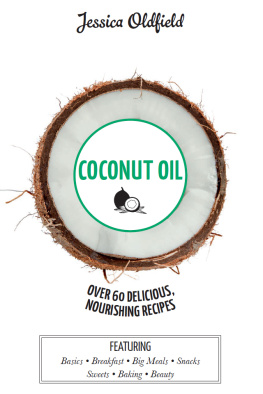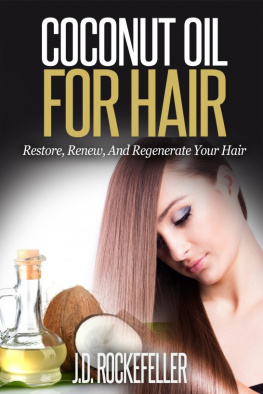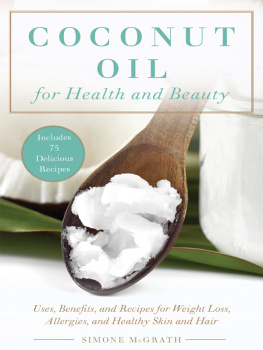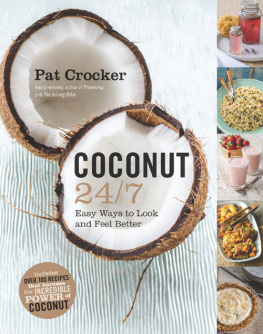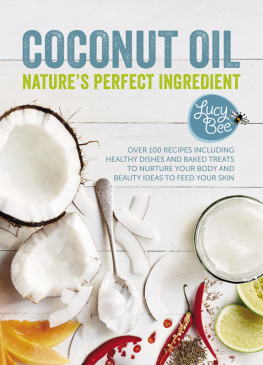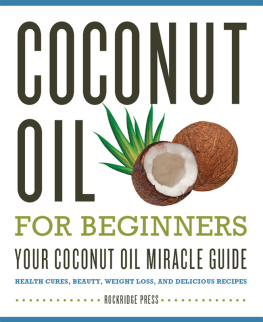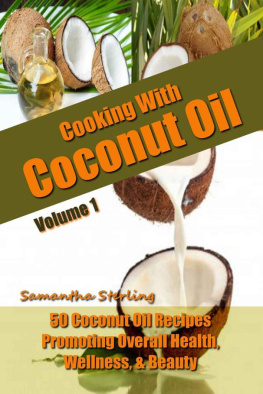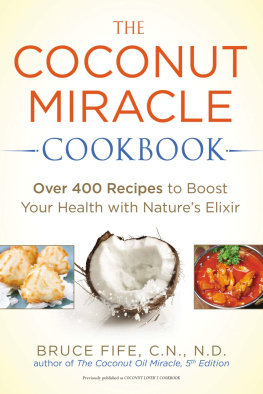Also available from Pamela Braun
High-Protein Pancakes
High-Protein Shakes
Frozen Paleo
Jerky Everything

CONTENTS




Without a doubt, youve heard a lot about coconut oil and its various health uses lately. Although its been used for thousands of years for a variety of purposes, only recently have we started to hear how beneficial it is. This book celebrates that, as well coconut oils many helpful applications.
Coconut oil is the oil retrieved from matured coconuts of the coconut palm. Coconuts are actually a fruitnot a nutand are among the most holistically useful fruits on the planet. The meat of the coconut is a high-energy, high-calorie food source. Its milk is nutritiously rich; the outer shell can be burned, turned into charcoal, or processed into other materials; the fiber is used in rope, gardening materials, and textiles; and the oil, derived from the meat, is nothing short of miraculous. Used for health and wellness, coconut oil has been shown to aid with lowering bad cholesterol and increasing good cholesterol. Studies have shown it helps with diabetes and digestion, as well as having strong antibacterial, anti-fungal, and antiviral properties. Coconut palms grow in more than ninety countries around the world, making the coconut a plentiful, stable, healthy super-fruit. This book focuses on the many amazing uses for coconut oil, from cooking and baking to household uses, health and wellness, and beauty.
Coconut oil is readily available in most grocery stores, health food stores, and online. This section lists the different kinds one can buy (unrefined, organic virgin; refined; and fractionated), and also includes a simple DIY recipe for extracting coconut oil from a whole coconut that uses a blender and some cheesecloth.
There are three main types of coconut oil: Unrefined, Organic, Virgin Coconut Oil; Refined Coconut Oil; Fractionated Coconut Oil.
Unrefined, Organic, Virgin Coconut Oil: This is the least processed of the different types of oils. The lack of processing means that the oil retains more of its natural components and tests higher for antioxidants and nutrients. Unrefined oil is the preferred oil for use on the skin because the majority of the great properties in the oil are still intact, and it doesnt contain any other chemicals. This oil is also great for cooking. Because it is virgin oil, it will still contain some of the coconut flavor and aroma. Organic virgin coconut oil is solid at temperatures 76F or cooler. The best organic virgin coconut oil to use is cold pressed. This type retains the most beneficial properties of the coconut oil.
Refined Coconut Oil: This oil has been processed using chemicals, heat, or other materials to refine the oil. Refined coconut oil does not contain all of the beneficial properties of virgin coconut oil because some are removed in the refining process. Refined coconut oil typically does not retain the aroma or flavor of the coconut. If using refined coconut oil, I recommend using heat- or steam-refined oil, as there are no chemicals used in this process, and therefore no chemicals would be absorbed by your body, either through your skin or by consuming the oil.
Fractionated Coconut Oil: This oil is also known as liquid coconut oil. This is coconut oil that has had its long-chain fatty acids removed via hydrolysis and steam distillation. Just by making this one change, the oil remains liquid at room temperature and extends the products shelf life. Fractionated coconut oil is perfect for those applications in which you dont want the oil to harden. It also makes it a great carrier oil for other oils that may be used in products. While fractionated coconut oil is technically edible (if you buy food-grade fractionated oil, which is what I recommend for the recipes in this book), it is not the best for you, since the lauric acid has been removed (see the Health and Wellness section in this chapter for an explanation of lauric acid). You should use fractionated coconut oil in health and beauty products (where you would not want the product to harden in cooler temperatures) or for household applications.
Making your own coconut oil is a great idea, because you know what goes into it (just coconut), and the fragrance of cold-pressed coconut oil is delightful. Its also a pretty easy thing to do. The only downside to making your own coconut oil is that you only get 3 to 5 tablespoons of oil per coconut.
The first step is to get brown coconuts. Do not use young coconuts to make coconut oil. The flesh of the coconut needs to be firm to make the oil.
Crack the coconut while firmly holding the coconut in your open palm (you can also line your hand with a dish towel). Use the back side (not the blade side) of a large, heavy knife to strike the coconut and crack it. Then pour the coconut water out into a bowl and continue striking the coconut until it splits. Youll be surprised by how easy it is to break into the coconut. Set the water off to the side.
Use a dull-bladed knife to pry all the coconut meat from the shell and place it into a bowl large enough to hold all of the meat. Its okay if it has some of the brown skin on it. I try not to have too much of the skin though. You can easily cut or peel it off the meat and discard.
Chop the coconut meat into small pieces.
Place the coconut pieces and coconut water plus 1 cup of filtered water into a blender. Blitz for about 2 minutes, until you are left with a creamy white liquid. You dont want discernible pieces of coconut in the liquid.
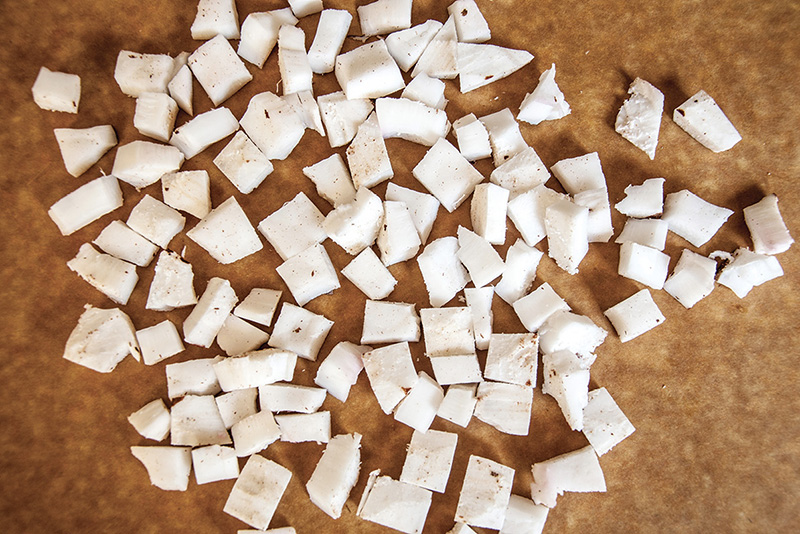
Pour the pured coconut into a large bowl. Give it a good stir. The mixture should look white and creamy.
Let the bowl sit, undisturbed, for 3 hours.
After 3 hours, the coconut will separate and float to the top. For this next process, youll need a second large bowl, a fine strainer, and two cheesecloth layers. Line the strainer with the two layers of cheesecloth and slowly pour the coconut mixture through the cheesecloth. Twist the cheesecloth to remove as much of the liquid from the coconut as you can. Discard the cheesecloth and coconut flakes.
Cover the bowl of liquid with plastic wrap and set it aside for 48 hours, then place it in the refrigerator for 3 hours, or until the top of the mixture solidifies. (These directions are presuming you are in an environment where the room temperature is around 70F.) If you are in a much warmer environment, let the bowl sit out for 24 hours and then place in the refrigerator for 24 hours.
After it has been in the refrigerator, youll notice a solid white mass on the top of the bowl; this is the coconut creamthe oil is just below the cream. Youll need to separate the cream from the coconut oil and water below it. Use a large spoon to scoop out the solid coconut cream from the bowl and discard the cream. Line the strainer with another layer of cheesecloth, and carefully spoon out the oil and drop it through the strainer. This will leave you with your coconut oil.
Next page

